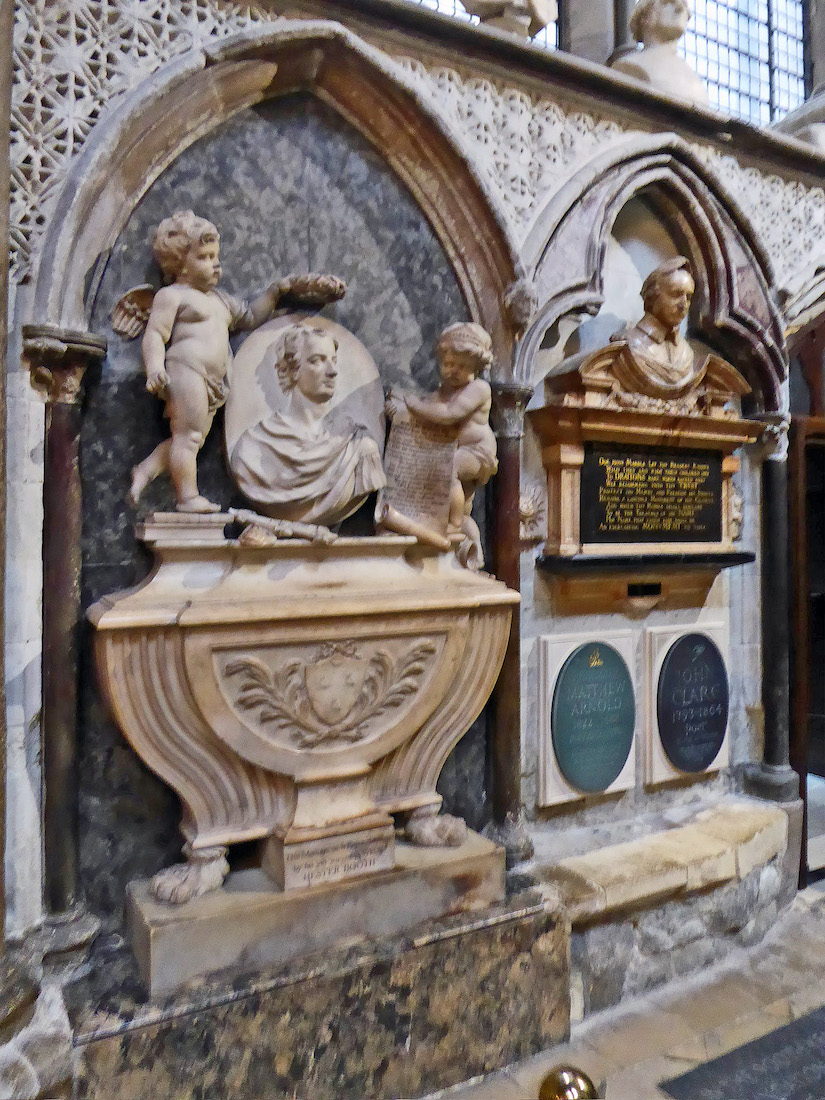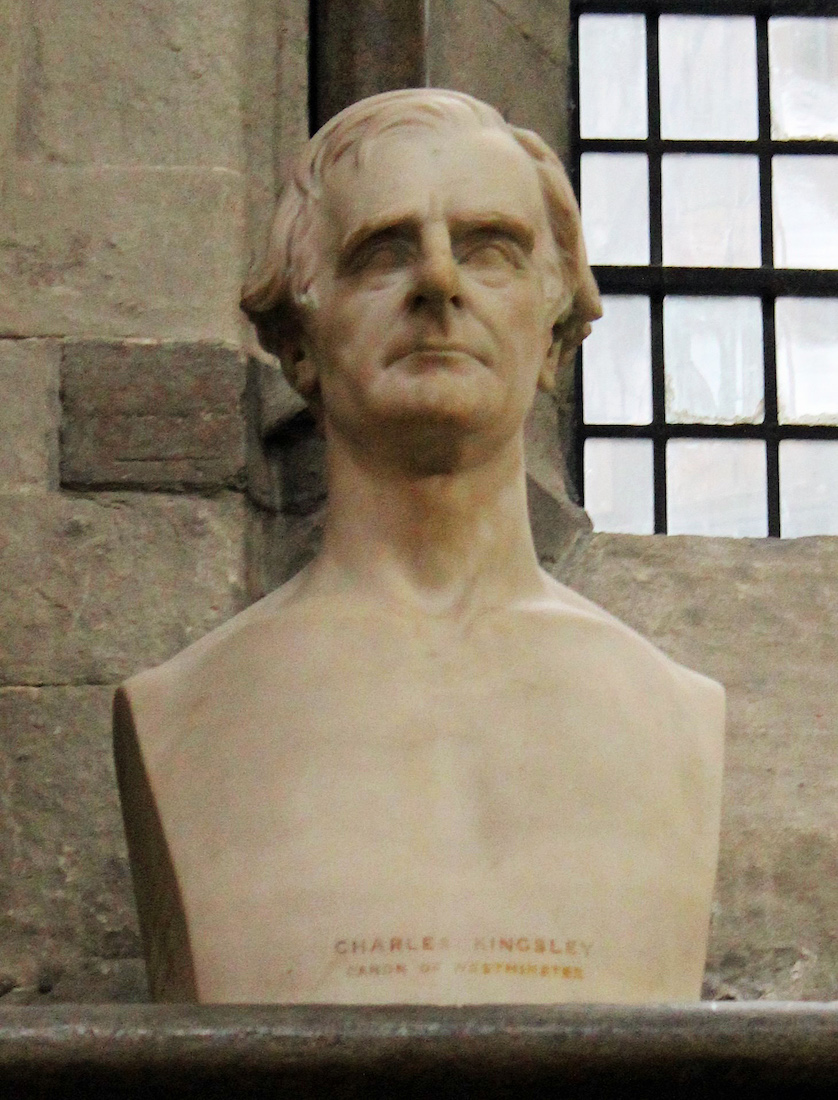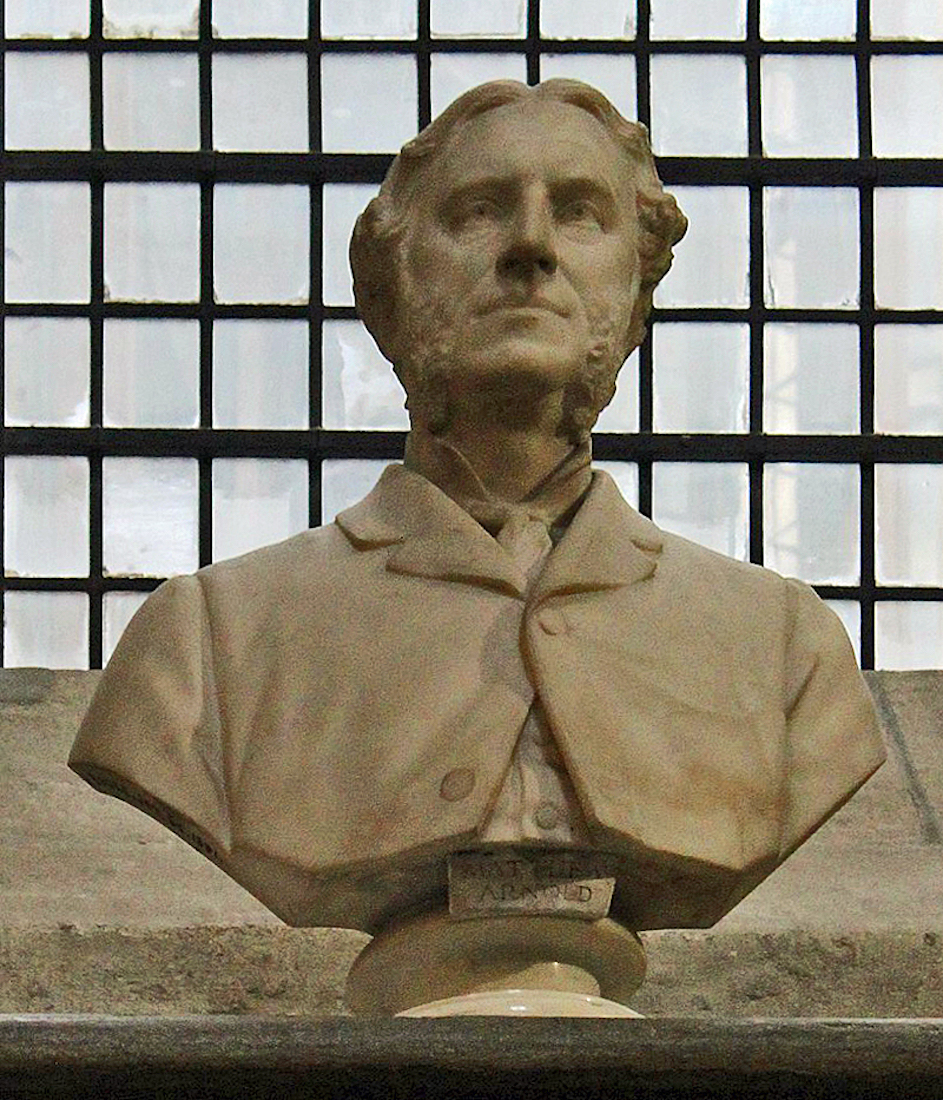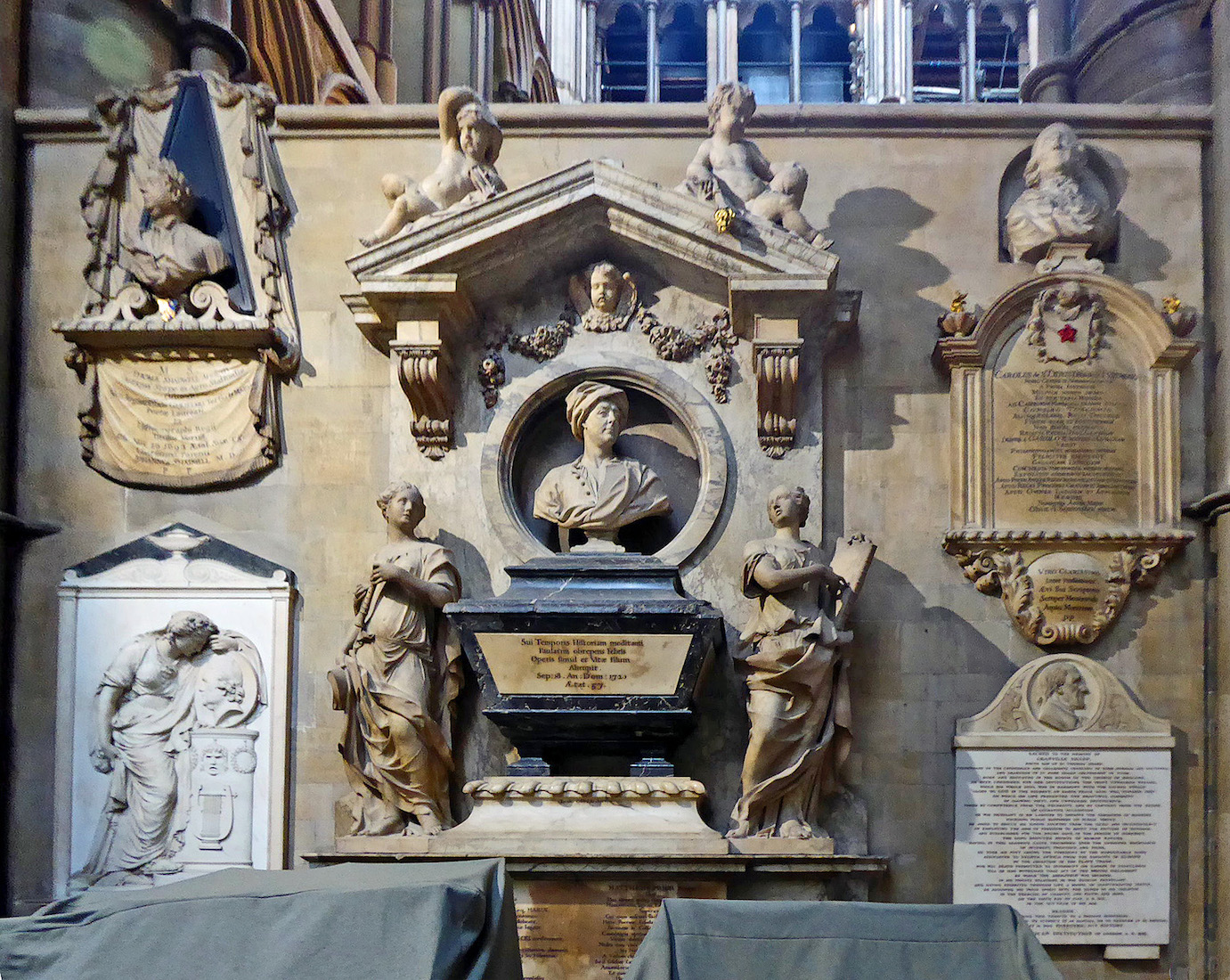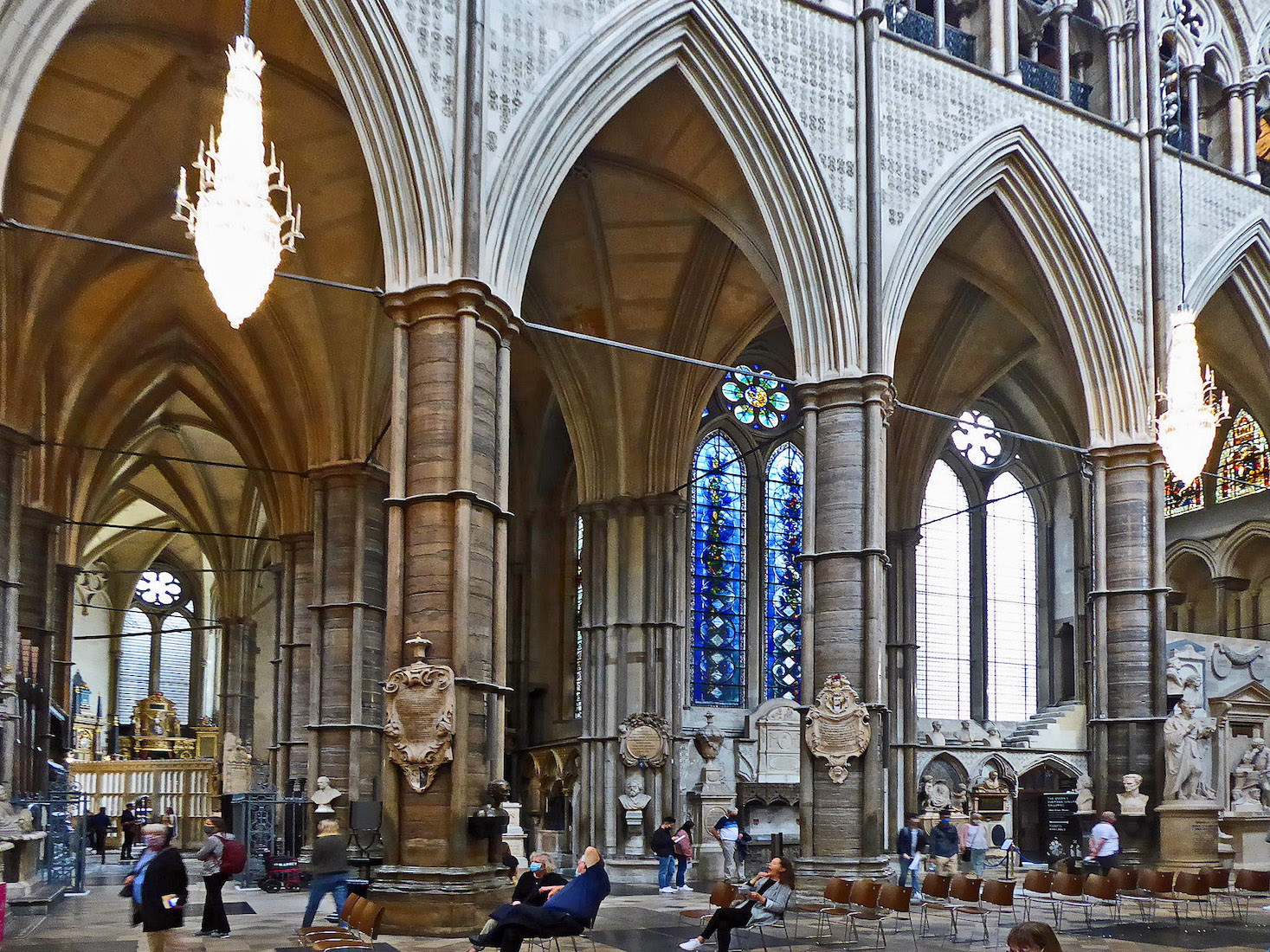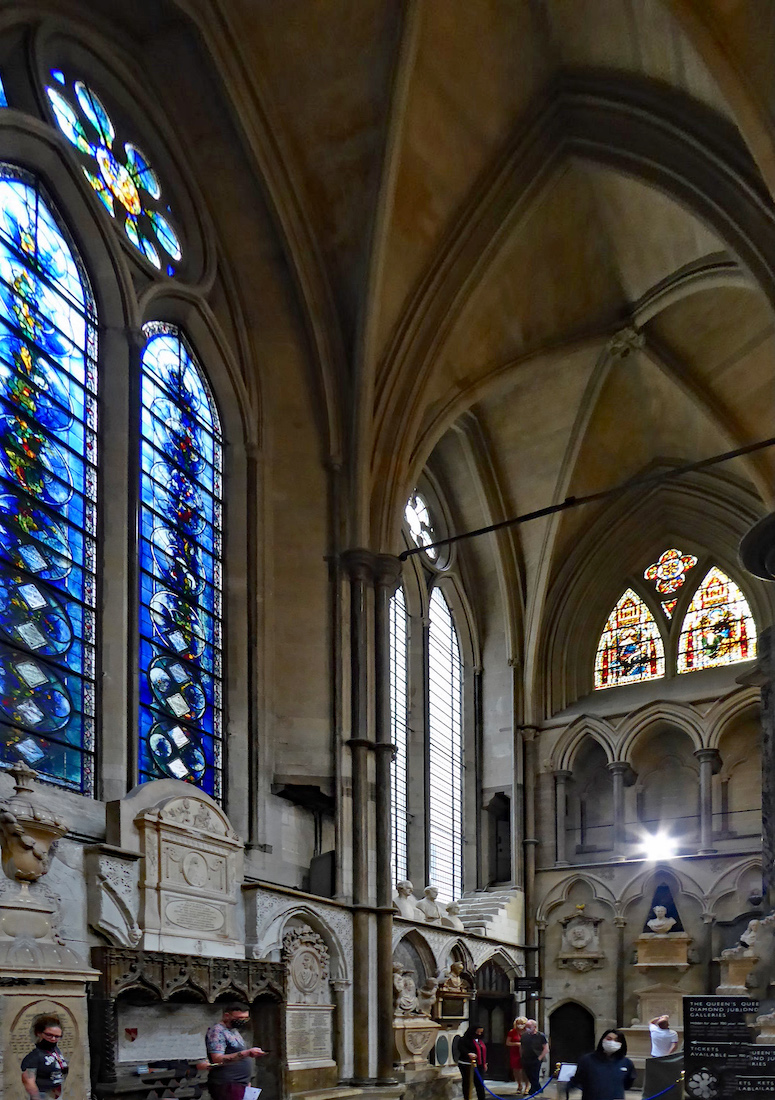
This is a view of the East aisle of the transept, looking to the South. Directly below the blue window is Chaucer’s tomb, and there are several busts by the adjacent plain-glass window. The colourful high windows on the far wall look interesting, but I have been unable to find a close-up photograph of them. In the (far) twelfth East Bay, the aisle is bounded on the right with a monument wall backing onto the Shakespeare wall. INDEX
E22. CHAUCER TOMB AMT
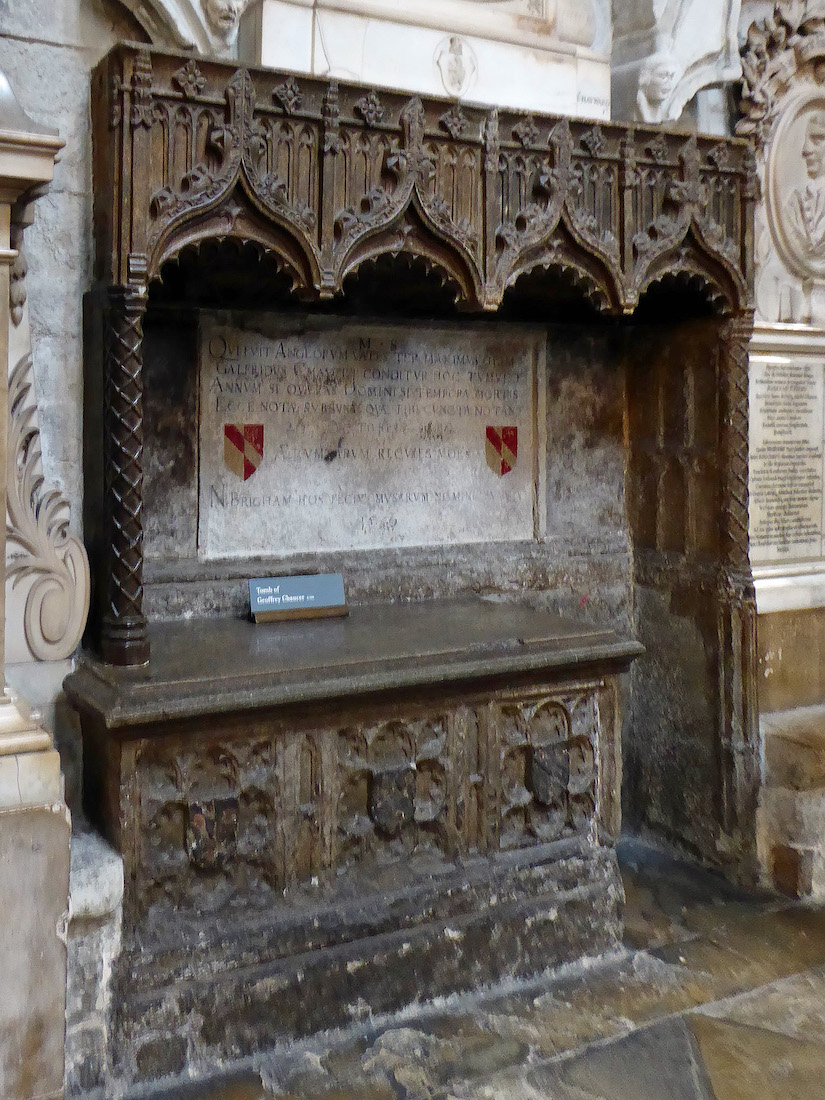
This is the tomb of Geoffrey Chaucer (d.1400). Chaucer wrote ‘The Canterbury Tales’ and is, next to Shakespeare, perhaps the most famous English poet. He has been called ‘The Father of English Poetry’.
E23. EAST WALL MONUMENTS AMT
These are the monuments along the East wall of Eastern Bay 12. •• At left is a monument remembering Barton Booth (d.1733), erected by his surviving widow Hester Booth. ••• The adjacent monument has to plaques remembering Matthew Arnold and John Clare. The Arnold inscription reads: ‘Remember Matthew Arnold 1822 – 1888 Poet and Critic. Let but the light appear and thy transfigured walls be touch'd with flame.’ The Clare inscription reads: John Clare 1793 – 1864 Poet. Buried at Helpston. ‘Fields were the essence of the song’.
E24. KINGSLEY AND ARNOLD BUSTS WC WC
At the base of the window above these last monuments are busts to Charles Kingsley and Matthew Arnold. •• Charles Kingsley (1819 – 1875), writer, poet, priest is famous for his novels ‘The Water Babies’ and ‘Westward Ho’. •• Matthew Arnold, poet and writer, is the only person to have two memorials in Westminster Abbey. [Photo Credits: Wikimedia Commons 14GTR: Photo1; Photo2]
E25. EAST AISLE AND TENNYSON BUST AMT
This view of the end of the East aisle gives some idea of the placing of the monuments on the South and West sides. •• On the defining pillar, there is a bust of Sir Alfred Tennyson, Poet Laureate (d.1892). His funeral, at the Abbey, was attended by thousands of mourners. The organist set to music words from Tennyson’s ‘Crossing the Bar’: ‘Sunset and evening star, And one clear call for me! And may there be no moaning of the bar, When I put out to sea. // But such a tide as moving seems asleep, Too full for sound and foam, When that which drew from out the boundless deep, Turns again home. // Twilight and evening bell, And after that the dark! And may there be no sadness of farewell, When I embark; // For tho from out our bourne of Time and Place, The flood may bear me far, I hope to see my Pilot face to face, When I have crost the bar.’
E26. EAST AISLE INNER BAY 14, MONUMENTS AMT
The Western wall of the Eastern aisle extends over a single bay. The large central monument remembers poet and diplomat Matthew Prior (1664 – 1721), and was in place by 1726.
E27. GENERAL VIEW AMT
This concludes our (incomplete!) exploration of the South transept. So to the crossing, and the sanctuary with its surrounding chapels.


